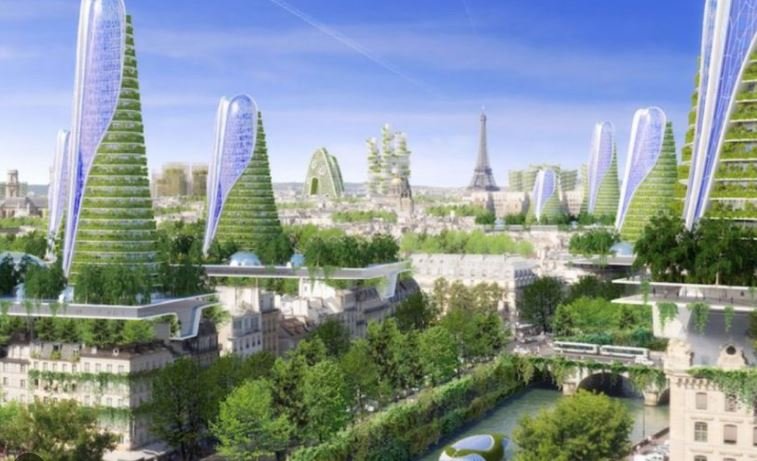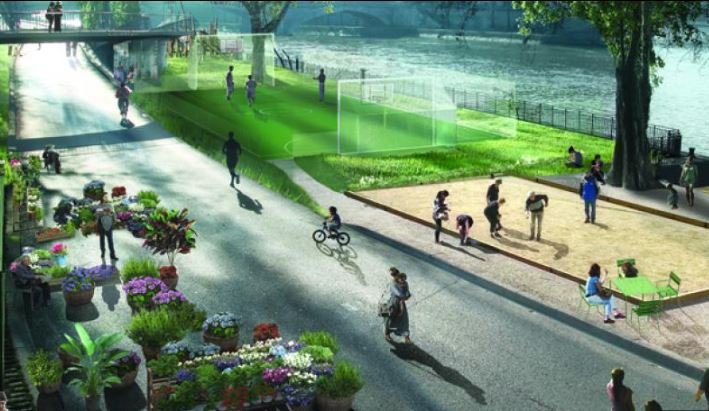The future of green cities revolves around integrating innovative urban environmental solutions to create sustainable and livable urban spaces. As cities grow and the impact of climate change becomes more pronounced, urban planners and environmentalists are focusing on transforming cities into greener, more sustainable places. This shift involves a range of strategies and technologies designed to enhance urban environments and improve residents’ quality of life.

Innovative Urban Green Spaces
The future of green cities features a significant emphasis on creating and enhancing urban green spaces. Parks, green roofs, and vertical gardens are becoming central elements in city planning. These green spaces provide not only aesthetic benefits but also improve air quality and offer residents places to relax and connect with nature.
Urban green spaces help reduce the urban heat island effect, which is critical as cities experience rising temperatures. By integrating more greenery into urban environments, cities can lower temperatures, absorb rainwater, and support biodiversity. For example, rooftop gardens on high-rise buildings can mitigate heat absorption and manage stormwater, while community parks provide valuable recreational areas.
Sustainable Urban Transportation
The future of green cities also focuses on developing sustainable urban transportation systems. Reducing the reliance on fossil fuels is a major goal, leading to the adoption of electric vehicles, bike-sharing programs, and enhanced public transportation options. These changes aim to lower carbon emissions and reduce traffic congestion in urban areas.
Electric buses and trams are becoming more common in cities worldwide, providing cleaner alternatives to traditional diesel-powered vehicles. Additionally, expanding bike lanes and pedestrian pathways encourages more people to choose eco-friendly transportation methods. By improving public transportation infrastructure and promoting sustainable travel options, cities can significantly reduce their environmental impact.
Energy-Efficient Buildings
The future of green cities involves the widespread adoption of energy-efficient building practices. Incorporating sustainable materials and technologies into new construction and renovation projects helps reduce energy consumption and lower greenhouse gas emissions. Green buildings are designed to be more energy-efficient, utilizing renewable energy sources like solar panels and wind turbines.
Buildings with smart energy management systems can optimize energy use, reducing wastage and lowering utility costs. Features such as high-performance insulation, energy-efficient windows, and LED lighting contribute to the overall sustainability of urban environments. By prioritizing energy efficiency, cities can move closer to their sustainability goals and create healthier living conditions for residents.
Waste Management Innovations
The future of green cities also addresses the challenge of waste management through innovative solutions. Cities are exploring ways to reduce, recycle, and manage waste more effectively. Strategies such as composting programs, zero-waste initiatives, and advanced recycling technologies are helping to minimize the environmental impact of urban waste.
Smart waste management systems use sensors and data analytics to optimize waste collection routes and schedules. This technology improves efficiency and reduces the carbon footprint of waste management operations. Additionally, promoting recycling and composting helps divert waste from landfills and encourages more sustainable waste practices.
Community Engagement and Education
The future of green cities highlights the importance of community engagement and education in achieving sustainability goals. Educating residents about the benefits of green practices and encouraging participation in sustainability initiatives are crucial for building a culture of environmental stewardship.
Community programs that promote recycling, energy conservation, and sustainable living can foster a sense of collective responsibility. By involving residents in sustainability efforts and providing resources for green living, cities can create more resilient and engaged communities.
Conclusion: Shaping a Greener Future
In conclusion, the future of green cities involves a comprehensive approach to urban environmental solutions. By focusing on innovative green spaces, sustainable transportation, energy-efficient buildings, waste management, and community engagement, cities can transform into more sustainable and livable environments. As urban areas continue to expand, these strategies will play a crucial role in shaping a greener future, ensuring that cities remain vibrant and resilient in the face of environmental challenges.

